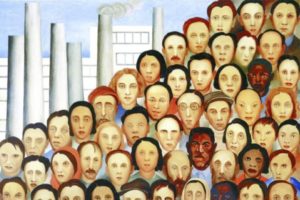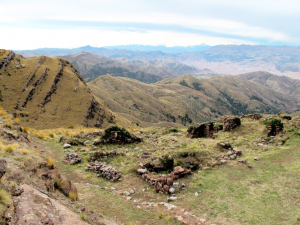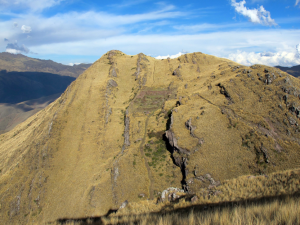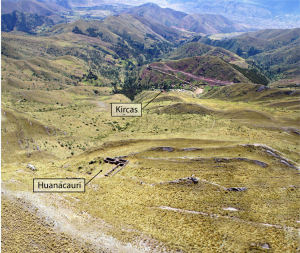Ethical Questions in Post-impeachment Brazil
By Rafael Estrada Mejía (São Paulo State University)
Last year, Brazil was in the world’s spotlight due to political turmoil and to its appeal as a tourism destination giant. The global media followed with ferocity both former President Dilma Rousseff’s impeachment with its accompanying massive protests for and against it, and the 2016 Olympic Games, when for the first time in history, ten refugee athletes from four countries competed together as the Refugee Olympic Team. The great irony is that, in the same time period, almost sixty thousand people were displaced because of sports mega-events such as the World Cup and the Rio Olympic Games. This occurred to make space for sports venues, tourism projects and transport, and to improve the international image of the host cities by eliminating slums from areas exposed to visitors and television audiences.
Two main concerns motivated me to write this piece. The first one is the unrest I felt because, for the most part, the Brazilian elite and middle classes (many of whom are white, intellectuals and university professors) paid no attention to the forced displacements, and later enthusiastically supported the coup d’état against Rousseff. Although outraged, I was not surprised. This scene is repeated in Brazil’s history. Disdain for democracy is the common denominator of both the coups of 1964 and of 2016. The difference is that this most recent coup follows the rules of financial capitalism, thus requiring the neoliberalization of the state and making both dictatorial and social welfare regimes anachronistic.
The second concern has to do with questioning the ethical implications of my own practice as an anthropologist and the role of social scientists at large in today’s political conjuncture. This reflection was fueled by my experiences as a postdoctoral researcher conducting studies of the elite. I am the only anthropologist in a research team formed by a group of renowned geographers who study the production of urban space in mid-size cities in the states of São Paulo and Paraná.
One of the research lines of the project is the real estate sector and the role of closed condominiums (the Brazilian version of US gated communities) in the context of public space

Operarios (Tarsila do Amaral, 1933)
production. My contribution to the the study of the processes of subjectivation of the emergent Brazilian elites who live in these spaces. I also study how closed condominiums have become one of the most desired living arrangements for all Brazilians. The project aims to overcome the dominant macropolitical framework used to understand closed condominiums to move the focus to a micropolitical approach. My understanding of these frameworks is based on the French thinkers Giles Deleuze and Felix Guattari, for whom both macropolitics and micropolitics are inherently political, public and private, and operate simultaneously from small to large levels so the distinction is based on the scale of the components interacting in a network, and not the scale of the network itself.
The Brazilian version of the 1% is not composed of millionaires, but by those who earn more than 30 times the monthly base salary (currently at R/.880 or approximately 244 dollars). The 1% in Brazil are people we see walking down the streets every day. It includes university professors, many of whom chose to live in closed condominiums. For the record, I am not part of that elite and do not live in in a closed condominium. But many of the professors I have interviewed for my research are part of this elite; some of them are social scientists and shared with me the belief that our role as researchers should be strictly confined to the analytical space. These remarks have made me wonder about the role of academics and intellectuals in Brazil. What are the implications of being progressive, analytic, and critical only within the confines of academic walls, and once the daily labor ends, comfortably returning to an individual paradise inside the walls of the closed condominium? What are the mechanisms that allow us to ignore the criminalized alterity that the media and institutional powers have constituted and reconstituted? What are the ethical and political challenges of anthropologists and social scientists in the Brazilian context?
The discipline of anthropology in Brazil tends to look at applied anthropology with disdain. This contrasts with other Latin American countries where there is a seamless flow between anthropological reflection, university life and applied projects. Except for the committed work of anthropologists with indigenous peoples and peoples of African descent, Brazilian anthropology has tended to be restricted to university life.
Studying Brazilian elites as an anthropologist and from a micropolitical perspective suggests a framework applicable beyond academia, as a map to navigate this complex world. By looking at the mode of existence of privileged groups who choose to isolate themselves from public life, we see that we cannot be committed and engaged at the macropolitical level, while remaining complacent at the micropolitical level. We need to find a way to eliminate microfascism from our discourse, our acts, our heart and our pleasures. By microfascism, I mean the desire that individuals have that others follow their own personal rules, which ultimate enable fascism at the state level. This kind of totalitarian view operates in both the public and private spheres.
It is important to suspend common sense or what Brazilian scholar Renato Ortiz calls the “a-critic consensus.” It is important to stop using the concepts of ethics and morality interchangeably. Morality deals with a series of external coercive norms, assumed to be universal and based on punishment. Ethics, on the contrary, deals with a series of facultative rules through which individuals constitute themselves as subjects, problematize their own actions, and create new modes of existence. Brazil is in dire need of ethically committed and engaged scholars.
Studying the elites is indeed a way to combat inequality in a country considered among the most unequal in the world. However, this is certainly not enough. It is essential to overcome the paralysis that sometimes accompanies the social sciences, to go beyond the academic sphere and reach a truly ethical dimension. It is essential to demonstrate acts of resistance in our lives, and to oppose all the established forms of fascism to impede that more be erected. As Brazilian scholar Suely Rolnik once said, “It is time for micropolitics to guide us!”
Filed under: activism, doing good, practicing/applied, the state | Comments Off on Ethical Questions in Post-impeachment Brazil



